Top Ways to Be a Better Legal Networker on LinkedIn
/LinkedIn can help lawyers significantly grow their network and build their business. It’s just a matter of leveraging the platform to its full potential.
LinkedIn is a powerful online tool, and reportedly the most widely used networking site by lawyers. According to the 2016 ABA Legal Technology Survey report, more than 90% of lawyers actively use LinkedIn as a networking tool. And with over 600 million members, there is no question that LinkedIn is the right place for attorneys interested in growing their network and business.
Many lawyers are still skeptical about the power of LinkedIn, however. Some aren’t sure how to properly use the tool or how to create a professional profile impactful enough to garner attention. Others may feel like their most coveted connections, particularly those in-house, don’t seem to use the platform in any real capacity. They don’t share or post, their profiles are bare-bones, and many of them don’t appear to “like” anything at all. It’s hard to know if they’re even paying attention to anything happening on LinkedIn.
But data shows that your most valuable contacts are, in fact, actively watching their feeds. According to the State of Digital and Content Marketing Survey, the majority of lawyers are:
Logging onto LinkedIn regularly
Reading the content posted by those in their network
Using LinkedIn as a tool to get news, expand expertise, and research outside counsel
Here is how attorneys can find success on LinkedIn:
1. Create a comprehensive profile
Everything you do on LinkedIn should lead back to your professional page; so, before anything else, you must create a robust profile. This will be your professional circle’s one-stop-shop to learn everything they need to know about you and, in many cases, it will also be people’s first impression of you.
For starters, it needs to include high-quality images, a smart headline, and a succinct yet informative summary. When used correctly, your LinkedIn profile can significantly enhance your online presence and attract desired professional opportunities.
2. Build your network
Once your profile is polished, it’s time to send out invitations to connect and build your network. It’s important to remember, however, that LinkedIn is not a social platform designed to help you reconnect with old friends. When thinking about adding people to your professional network, ask yourself how each person can, in some way, enhance your career or positively impact your professional brand.
They can be previous classmates, colleagues, industry thought leaders or prospective clients. You should also research companies that are in your niche and follow them to see what they’re consistently doing on LinkedIn. This will give you valuable insight into how they operate, the type of content they share, and who holds what positions within the company, providing even more opportunities to follow and connect with influential people.
3. Engage with your network
While an impressive network may seem like the endgame, it is just the tip of the iceberg. As you build your network, you must remember to actively engage with your carefully curated audience. Engaging with your audience doesn’t have to be overly time-consuming—just take some time each day to like or comment on your connections’ posts, and share the posts that will provide value to your network. When you engage with others on LinkedIn, those users will be notified, and so will their networks. This is how you solidify relationships and enhance your visibility.
4. Post original content
While engaging with your connections is an important piece of the puzzle, it is equally as important that you position yourself as a resource for your network by posting original content. Creating content significantly boosts your visibility on LinkedIn because as it is shared and makes its way to people’s feeds, all roads lead back to you, driving engagement, connections, and followers.
While creating content takes more time than passively engaging with other people’s content, it doesn’t have to be all-consuming. Try repurposing what you already have, like posting a few key takeaways from an article you’ve already written and provided a link to the rest of it. You can also post images from industry events, or share impactful slides from a recent presentation, for example. Whatever you choose, just be sure it effectively highlights your expertise.
5. Join groups
LinkedIn groups consist of like-minded people with shared interests who come together to form online communities. They are chock-full of referral sources, potential clients, thought leaders, and skilled networkers, and they are the perfect place to read and share industry content.
Take a look at your connections and see which groups some of your most influential connections belong to. Once you’ve selected and joined your groups, you can post to discussion boards or message group members individually. Being active in groups will give you access to people that you may otherwise not have had access to. It also further enhances your visibility, increases engagement, and expands your network.
No matter what, always exercise sound judgment when sharing, posting, and engaging with others on LinkedIn. Remember, your online presence is an extension of your professional brand. Always remain positive, use correct English and spelling, comply with company social media regulations, never share confidential information, and be professional and respectful.
Carrington Legal Search has a nationwide network of legal and compliance professionals. Follow us on LinkedIn! To make our nationwide network work for you, get in touch at 512.627.7467 or carrie@carringtonlegal.com.

